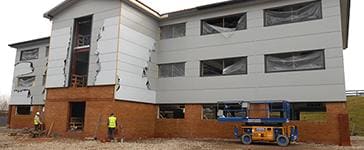
Although taking on commercial premises is a routine part of business, this is an area that often results in disputes, claims and significant costs for both landlords and tenants. Part of the issue is that the obligations of both parties are not always fully appreciated – leaving confusion as to who has responsibility for what.
Here, we look at the various stages of a commercial lease and seek to answer the question – where does the responsibility lie?
Beginning
If a property is vacant, it is the landlord’s responsibility to maintain it. On occasion, where a new tenant is looking to take occupancy, the completion of works to suit their requirements may be a good negotiation tool, and an agreement may be struck for certain works to be completed by the landlord prior to the lease commencing.
Chartered Surveyors can be instructed to produce a Schedule of Condition prior to the start of any tenancy to document the condition of the property at that time. This can help to reduce the risk of disputes regarding the property’s condition down the line.
Middle
Throughout the course of a commercial lease, the responsibility for any repair or maintenance works usually falls with the tenant (e.g. FRI leases). This being said, some landlords may contribute to certain costs should they decide it is in their best interests to do so, although this is by no means a common occurrence.
Tenants often find it is in their best interests to keep on top of their repair obligations by following a planned preventative maintenance schedule. A Chartered Surveyor can advise on this – laying out the areas of the property that may need repairing and in what order, so works can be organised and budgeted for.
End
When it comes to the end of a tenancy and the current tenant decides to move out, there will usually be a responsibility to return the property to its previous condition. If repair and maintenance works have been managed and undertaken along the way, this process can be fairly straightforward for the tenant. However, if this isn’t the case, or if there is a dispute between the landlord and the tenant regarding the commercial property’s condition, a landlord may be within their rights to issue a Schedule of Dilapidations and subsequent dilapidations claim.
For further information on how Matthew Parkinson Surveyors can help landlords and tenants in the area of commercial property, including the preparation of Schedules of Condition, Pre-Lease Assessments, Schedules of Dilapidations and advice on defending a dilapidations claim, please get in touch.
Operating predominantly in the Lancaster, south Lakes and Yorkshire Dales, Matthew Parkinson is also part of Lea Hough Chartered Surveyors, covering the entirety of Lancashire and Cumbria.




